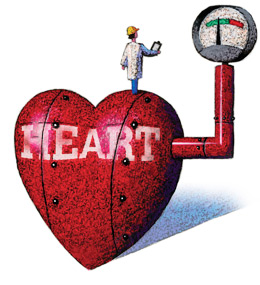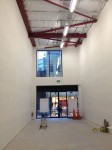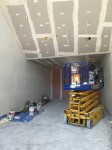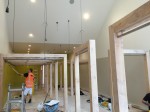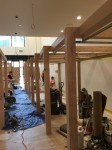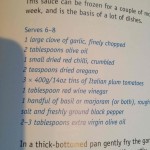To get the best out of your massage experience, it’s important to communicate openly and effectively with your massage therapist. Here are a few tips to enhance your session and maximize the benefits:
- Communicate your needs: Before the massage begins, have a short conversation with your therapist about your specific goals and any areas of concern. Whether you’re seeking relaxation, pain relief, or stress reduction, let them know. Discuss any medical conditions, injuries, or allergies you may have as well. This will help the therapist customize the massage techniques and pressure to suit your individual needs.
- Relax and let go: During the massage, it’s crucial to relax your mind and body. Take deep breaths and consciously release tension with each exhale. Allow the therapist’s skilled hands to work their magic without any unnecessary muscular tension. Clear your mind of distractions and focus on the sensations and benefits of the massage. If you feel any discomfort or the pressure is too intense, don’t hesitate to communicate with your therapist. Remember, they are there to ensure your comfort and well-being throughout the session.
By following these guidelines, you can optimize your massage experience and reap the full benefits of relaxation, pain relief, improved circulation, and overall well-being. Remember, communication and relaxation are key to getting the most out of your massage session. Enjoy the experience and allow your body and mind to fully unwind and rejuvenate.
A growing body of research indicates massage therapy can benefit the immune system to help prevent cold and flu during winter months.
People looking to fend off cold and flu as the winter months arrive should speak to a massage therapist about prevention strategies. Regular massages have been shown to make the immune system stronger, according to studies.
“Researchers working with patients with compromised immune systems have found massage therapy can improve how the immune system functions,” said Jeff Smoot, President of the American Massage Therapy Association (AMTA). “Those same benefits translate to people seeking to fight off the common cold, flu and other seasonal illnesses.”
Massage therapy increases the activity level of the body’s white blood cells that work to combat viruses. According to research from Cedars-Sinai, participants in a Swedish massage group experienced significant changes in lymphocytes, which play a large role in defending the body from disease.i A lymphocyte is one of the three subtypes of white blood cells in the immune system.
In a controlled study composed of HIV-positive adolescents, participants who received massage therapy showed enhanced immune function by the end of the 12-week study. The immune changes included increased white blood cells knowns as natural killer (NK) cells, which provide rapid responses to viral-infected cells.ii
An additional randomized study found women with stage 1 and 2 breast cancer may benefit from massage therapy for enhancing dopamine and serotonin while also increasing NK cell number and lymphocytes. Immediate massage benefits included reduced anxiety while the long-term impact increased serotonin values, natural killer cell numbers and lymphocytes,iii which work to strengthen the immune system and cognitive function during sickness.
https://www.prnewswire.com/news-releases/massage-therapy-may-boost-immune-system-to-combat-cold-flu-300171787.html
http://www.amtamassage.org
Our Wellington Store has moved to:
100 Willis Street, 200 metres up from our current store.
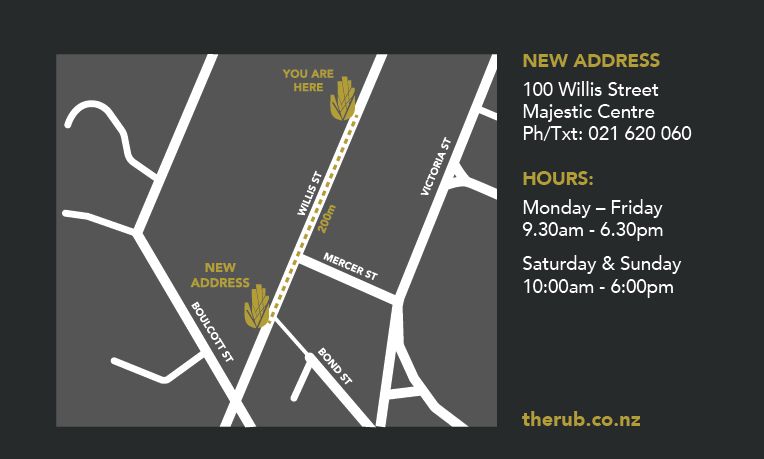
3 Ways Massage Can Impact Your Self-Care
Stress, anxiety, and pain can dramatically restrict anyone’s lifestyle and negatively affect their overall health. Take care of yourself. Research on the benefits of massage therapy gives strong evidence for including massage as part of an approach to staving off pain and relieving stress and anxiety.

Stress
Anyone who has ever had a massage to relax knows its effect, but research shines a light on the science behind what takes place during massage. For more than 20 years, studies have shown some of the positive effects of massage therapy for relaxation. In a study on the effect of trigger point therapy1, there was a significant decrease in heart rate, systolic blood pressure8, and diastolic blood pressure8. Measures of oxygen consumption, blood pressure, and salivary cortisol levels were all lower after a 10 to 15 minute chair massage in controlled studies.2, 3, 4 Changes in psychological states have been measured by physiological responses1, 3, the Perceived Stress Scale5,6, the POMS Depression Scale4,5, and the Anxiety State Scale.4
Anxiety
Research continues to document the impact for relief of anxiety and depression for people in a wide range of health situations.8, 9, 10, 11 For example, one randomized study found women with stage 1 and stage 2 breast cancer benefited from regular massage therapy sessions. The immediate massage benefits included reduced anxiety, depressed mood and anger, while the long-term impact reduced depression and increased serotonin values. Serotonin, a neurotransmitter with functions in various parts of the body, works to regulate mood, appetite, sleep, memory and learning.
Pain
From the muscle strain and soreness when you overdo it to serious or chronic pain, massage therapy is showing positive results. Consumers are learning its value, as 41 percent of American adults who had a massage in the past five years indicate they sought it for pain relief.12
A meta-analysis of research on massage therapy for pain conducted by Samueli Institute in 2016 concluded that massage therapy should be strongly recommended for pain management. The analysis reviewed 67 published studies on the impact of massage therapy on pain.13
References
1. Delaney, J.P., Leong, K.S., Watkins, A., & Brodie, D. (2002). The short-term effects of myofascial trigger point massage therapy on cardiac autonomic tone in healthy subjects. Journal of Advanced Nursing, 37, 364-71.
2. Boone, T., Tanner, M., & Radosevich, A. (2001). Effects of a 10-minute back rub on cardiovascular responses in healthy subjects. American Journal of Chinese Medicine. 29, 47-52.
3. Cady, S. H., & Jones, G. E. (1997). Massage therapy as a workplace intervention for reduction of stress. Perceptual & Motor Skills, 84, 157-158.
4. Field, T., Ironson, G., Scafidi, F., Nawrocki, T., Goncalves, A., Burman, I., Pickens, J., Fox, N., Schanberg, S., & Kuhn, C. (1996). Massage therapy reduces anxiety and enhances EEG pattern of alertness and math computations. International Journal of Neuroscience, 86, 197-205.
5. Brennan, M.K. & DeBate, R. (2004).The effect of chair massage on stress perception of hospital bedside nurses. Massage Therapy Journal 43, (1), 76-86.
6. Field, T., Quintino, O., Henteleff, T., Wells-Keife, L., & Delvecchio-Feinberg, G. (1997). Job stress reduction therapies. Alternative Therapies in Health and Medicine, 3, (4), 54-56.
7. MacDonald, G. (1998). Massage offers respite for primary care givers. The American Journal of Hospice & Palliative Care, Jan/Feb, 43-47.
8. Jane, S.W., Wilkie, D.J., Gallucci, B.B., Beaton, R.D., Huang, H.Y. (2009). Effects of a Full-Body Massage on Pain Intensity, Anxiety, and Physiological Relaxation in Taiwanese Patients with Metastatic Bone Pain: A Pilot Study. J Pain Symptom Manage. 37(4):754-63.
9. Imanishi, J., Kuriyama, H., Shigemori, I., Watanabe, S., Aihara, Y., Kita, M., Sawai, K., Nakajima, H., Yoshida, N., Kunisawa, M., Kawase, M., Fukui, K. (2007). Anxiolytic Effect of Aromatherapy Massage in Patients with Breast Cancer. Evid Based Complement Alternat Med.
10. Smith, M., Reeder, F., Daniel, L., Baramee, J., Hagman, J. (2003). Outcomes of touch therapies during bone marrow transplant. Alternative Therapies in Health and Medicine, 9(1) 40-49.
11. Hughes, D., Ladas, E., Rooney, D., Kelly, K. (2008). Massage therapy as a supportive care intervention for children with cancer. Oncol Nurs Forum, 35(3):431-42.
12. American Massage Therapy Association annual consumer survey conducted by ORC International, July 2017.
13. Crawford C, Boyd C, Paat C, et al. The Impact of Massage Therapy on Function in Pain Populations – A Systematic Review and Meta-analysis of Randomized Controlled Trials: Part I, Patients Experiencing Pain in the General Population. Pain Medicine, first published online: 10 May 2016.
https://www.amtamassage.org/research/Massage-Therapy-Research-Roundup/Research-Roundup–Benefits-of-Massage-Therapy-for-Self-Care.html
5 Sports Massage Benefits
From beginner athletes to elite competitors, massage therapy offers a variety of important health benefits. Learn more about how you can benefit from adding massage therapy to your fitness regime.
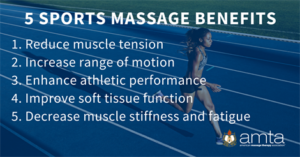
Individuals who participate in exercise and athletic programs who seek enhanced performance, improved conditioning, faster recovery, injury prevention and assistance in maintaining peak fitness can benefit from massage therapy.
https://www.amtamassage.org/articles/1/News/detail/3574/5-sports-massage-benefits
Stress, anxiety, and pain can dramatically restrict anyone’s lifestyle and negatively affect their overall health. Take care of yourself. Research on the benefits of massage therapy gives strong evidence for including massage as part of an approach to staving off pain and relieving stress and anxiety.
Stress
Anyone who has ever had a massage to relax knows its effect, but research shines a light on the science behind what takes place during massage. For more than 20 years, studies have shown some of the positive effects of massage therapy for relaxation. In a study on the effect of trigger point therapy1, there was a significant decrease in heart rate, systolic blood pressure8, and diastolic blood pressure8. Measures of oxygen consumption, blood pressure, and salivary cortisol levels were all lower after a 10 to 15 minute chair massage in controlled studies.2, 3, 4 Changes in psychological states have been measured by physiological responses1, 3, the Perceived Stress Scale5,6, the POMS Depression Scale4,5, and the Anxiety State Scale.4
Anxiety
Research continues to document the impact for relief of anxiety and depression for people in a wide range of health situations.8, 9, 10, 11 For example, one randomized study found women with stage 1 and stage 2 breast cancer benefited from regular massage therapy sessions. The immediate massage benefits included reduced anxiety, depressed mood and anger, while the long-term impact reduced depression and increased serotonin values. Serotonin, a neurotransmitter with functions in various parts of the body, works to regulate mood, appetite, sleep, memory and learning.
Pain
From the muscle strain and soreness when you overdo it to serious or chronic pain, massage therapy is showing positive results. Consumers are learning its value, as 41 percent of American adults who had a massage in the past five years indicate they sought it for pain relief.12
A meta-analysis of research on massage therapy for pain conducted by Samueli Institute in 2016 concluded that massage therapy should be strongly recommended for pain management. The analysis reviewed 67 published studies on the impact of massage therapy on pain.13
References
1. Delaney, J.P., Leong, K.S., Watkins, A., & Brodie, D. (2002). The short-term effects of myofascial trigger point massage therapy on cardiac autonomic tone in healthy subjects. Journal of Advanced Nursing, 37, 364-71.
2. Boone, T., Tanner, M., & Radosevich, A. (2001). Effects of a 10-minute back rub on cardiovascular responses in healthy subjects. American Journal of Chinese Medicine. 29, 47-52.
3. Cady, S. H., & Jones, G. E. (1997). Massage therapy as a workplace intervention for reduction of stress. Perceptual & Motor Skills, 84, 157-158.
4. Field, T., Ironson, G., Scafidi, F., Nawrocki, T., Goncalves, A., Burman, I., Pickens, J., Fox, N., Schanberg, S., & Kuhn, C. (1996). Massage therapy reduces anxiety and enhances EEG pattern of alertness and math computations. International Journal of Neuroscience, 86, 197-205.
5. Brennan, M.K. & DeBate, R. (2004).The effect of chair massage on stress perception of hospital bedside nurses. Massage Therapy Journal 43, (1), 76-86.
6. Field, T., Quintino, O., Henteleff, T., Wells-Keife, L., & Delvecchio-Feinberg, G. (1997). Job stress reduction therapies. Alternative Therapies in Health and Medicine, 3, (4), 54-56.
7. MacDonald, G. (1998). Massage offers respite for primary care givers. The American Journal of Hospice & Palliative Care, Jan/Feb, 43-47.
8. Jane, S.W., Wilkie, D.J., Gallucci, B.B., Beaton, R.D., Huang, H.Y. (2009). Effects of a Full-Body Massage on Pain Intensity, Anxiety, and Physiological Relaxation in Taiwanese Patients with Metastatic Bone Pain: A Pilot Study. J Pain Symptom Manage. 37(4):754-63.
9. Imanishi, J., Kuriyama, H., Shigemori, I., Watanabe, S., Aihara, Y., Kita, M., Sawai, K., Nakajima, H., Yoshida, N., Kunisawa, M., Kawase, M., Fukui, K. (2007). Anxiolytic Effect of Aromatherapy Massage in Patients with Breast Cancer. Evid Based Complement Alternat Med.
10. Smith, M., Reeder, F., Daniel, L., Baramee, J., Hagman, J. (2003). Outcomes of touch therapies during bone marrow transplant. Alternative Therapies in Health and Medicine, 9(1) 40-49.
11. Hughes, D., Ladas, E., Rooney, D., Kelly, K. (2008). Massage therapy as a supportive care intervention for children with cancer. Oncol Nurs Forum, 35(3):431-42.
12. American Massage Therapy Association annual consumer survey conducted by ORC International, July 2017.
13. Crawford C, Boyd C, Paat C, et al. The Impact of Massage Therapy on Function in Pain Populations – A Systematic Review and Meta-analysis of Randomized Controlled Trials: Part I, Patients Experiencing Pain in the General Population. Pain Medicine, first published online: 10 May 2016.
Article from AMTA, see www.amtamassage.org
Massage Therapy Can Help Lower Blood Pressure & Control Stress
In a recent study in the International Journal of Preventive Medicine, researchers concluded massage therapy could serve as an effective intervention in controlling blood pressure in pre-hypertensive women. The study showed that the immediate results of lowered blood pressure lasted up to 72 hours after massage. FULL STUDY »

